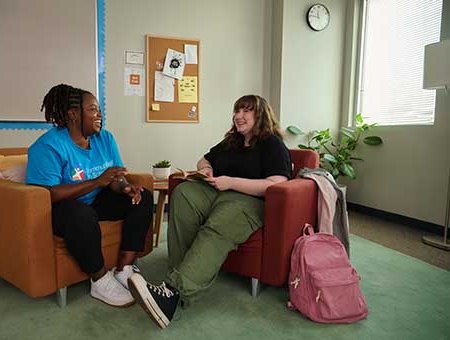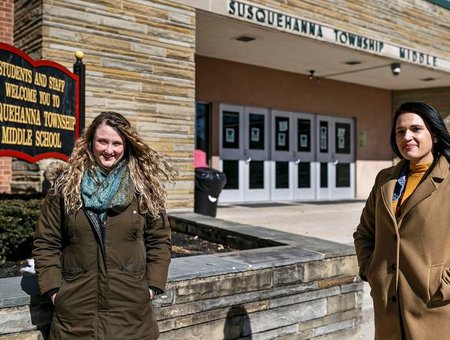Chronic absenteeism doesn’t have just one solution — it has many
This op-ed was published in the Reno Gazette Journal on Dec. 20, 2023.
Chronic absenteeism has emerged as one of the most severe problems facing American students and educators today. As several reports indicate, this issue has been worsening for years, but COVID created a crisis. An unprecedented two-thirds of schools struggled to keep students in classes during the 2021-22 year — more than doubling the severe chronic absenteeism rate before lockdowns. Solving this problem is not simply a matter of forcing students back into school; it starts by understanding what’s keeping them away and removing those barriers.
Chronic absenteeism (missing 10 percent or more of the school year), and its many causes, are clear and well documented. What is less obvious is the range of solutions available to reverse the trend. Some advocate for more punitive actions against parents — a move that certain states already employ by withholding financial support based on students’ attendance records. Others offer more compassionate calls for mental health days and programs to promote well-being.
Ultimately, a key way that our schools and communities will reverse the tide of chronic absenteeism is by providing expansive wraparound services that meet the individual needs of students.
This issue is complex, and its many contributing factors prevent us from deploying a one-size-fits-all solution. To effectively address chronic absenteeism, we must hear firsthand from students and families about their concerns and priorities.
Students and families are still reeling from COVID-19. More than 1 in 3 high school students experienced regular mental health struggles during the pandemic, with nearly 30 percent reporting that a parent in their household had lost their job. More than 200,000 U.S. children and teenagers lost parents and other primary caregivers due to COVID-19. Teachers struggled as well, grappling with emotional exhaustion, health concerns, virtual classrooms and their own familial crises.
COVID-19 exacerbated existing problems and compounded them with new challenges. Many of these are not directly tied to education but occupy the forefront of our students’ minds. We can’t expect kids to show up at their best if they’re anxious about their future. We can’t expect families to be hypervigilant about attendance if they’re worried about the electricity bill. But we can listen and tailor a response that addresses individual needs and transcends just academic support. That is what our work focuses on, and it’s how we approach this challenge with dynamic and effective solutions.
By prioritizing key wrap-around services, we made a noticeable impact on chronic absenteeism rates. At Communities in Schools® (CIS®), we launched the Challenge Schools initiative, which provides extra support to schools that have students with additional socioeconomic barriers. We met with educators at each school who identified one challenge area that they aimed to improve. For the majority, that issue was chronic absenteeism.
As part of the program, we had dedicated staffers inside each of these schools working with educators, the community and students to encourage and track progress. We conducted needs assessments and created support plan processes, individualized for students and their circumstances. We scheduled home visits to families, conducted door-knocking campaigns and encouraged them to attend school events. We ensured that any and all communication was culturally responsive and accessible for our diverse network. But it always began with a conversation.
We kept close contact with school staff throughout their participation at every level — from administrators to teachers. We connected with families and students throughout every step. Together, we charted a path forward everyone could trust because they were involved and consulted from the very beginning.
Since we implemented the program in the 2018-2019 school year, we could compare pre and post-pandemic attendance rates. In a study conducted with the American Institute of Research, which measured the impact of our work in CIS Challenge Schools against non-CIS affiliated schools, we found students were 13 percent less likely to be chronically absent where we had these wraparound services and additional support in 2021-22.
At the end of the day, there is no one magic answer or easy fix. But CIS has a tried and tested approach that we’ve seen move the needle. First, we account for the issues that communities are still grappling with following the pandemic. We know that these issues exert disproportionate impacts on under-resourced families, and we need to acknowledge that their fears and trauma touch everything from economic hardship to emotional wellbeing to academic motivation.
It will take time, and it will certainly take investment. It will take pulling back the curtain and surveying needs — district by district, school by school. It will take commitment to ensuring that schools are safe spaces where students feel heard and accepted when they do return. But our response will be better informed, and our students will be better off.
Tailored support leads to greater opportunity. Schools should encourage and foster positive relationships between adults to other adults, students to other students, and students and adults. Students want to show up and learn. It’s on us to help eliminate the barriers to do it.
Rey Saldaña is CEO and president of education nonprofit Communities in Schools (CIS), and Debbie Palacios is executive director of CIS of Southern Nevada.



